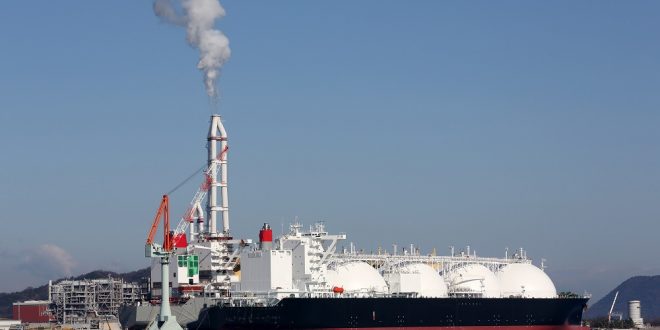Europe is importing record volumes of liquefied natural gas (LNG) as it looks to cut as much Russian gas consumption as soon as possible. Unlike in previous years, Europe is now the most attractive destination for global LNG flows, outbidding Asia for spot supply as prices and demand in Europe have soared after the EU’s irreversible decision to stop being beholden to Putin for its gas consumption as fast as feasible. Amid soaring demand, however, LNG terminals in Europe are maxed out, limiting how many cargoes the continent can import now before planned new import and regasification terminals can be built and brought online. This has prompted suppliers keen on growing their LNG exports to Europe to offer cargoes at discounts of up to 20 percent to the prices at the Dutch TTF hub, the benchmark gas price for Europe, in order to secure slots at import terminals, traders tell Bloomberg.
Europe’s record LNG imports mitigated the gas price action after Russia halted gas deliveries to EU members Poland and Bulgaria earlier this week. After jumping by as much as 24% on Wednesday morning when Bulgaria and Poland said their Russian gas supply had been cut off, natural gas prices in Europe pared gains later in the day and even eased on the following day. This was largely due to continued high LNG imports, the EU’s vow to help affected member states, and significantly improved storage levels at the end of the winter heating season.
LNG exporters are now focused on Europe as a key import market and are reportedly willing to offer discounts now in order to win more customers in the future, as the EU looks to ditch Russia as a supplier as soon as it can afford it without causing a recession.
Even before the Russian invasion of Ukraine, Europe was plunged into an energy crisis in the autumn of 2021, with low levels of gas in storage and rebounding industry demand post-COVID. The war in Ukraine made Europe rethink its energy strategy, and the European Union has now drafted plans to cut EU demand for Russian gas by two-thirds before the end of 2022 and completely by 2030, possibly by 2027.
Strong LNG demand in Europe while China grapples with fresh COVID-related lockdowns suggests that Europe will continue to be the preferred destination of spot LNG cargoes at least this year and next. The EU will seek to replenish gas in storage levels before next winter so it will be more prepared if—or rather when—Russia decides to halt gas flows to more EU customers, as it already did with Poland and Bulgaria.
Europe will also look to import more LNG in coming years to displace as much Russian gas—which met 40 percent of EU consumption pre-war—as soon as possible. One of the most dependent large economies, actually the biggest economy in Europe, Germany, plans to build two LNG import facilities; one at Brunsbuettel and one at Wilhelmshaven. Germany doesn’t currently have any LNG import terminals. In March, German LNG Terminal and Shell signed an agreement under which the supermajor will make a long-term booking of a substantial part of the Brunsbuettel terminal’s capacity for importing LNG.
Germany, which until two months ago had only sporadically thought of LNG import terminals and imports, now seeks a long-term deal with one of the world’s top LNG exporters, Qatar.
As a result of the EU’s new energy policy, natural gas and LNG prices are expected to remain elevated for years to come.
“Gas prices will remain high until 2026 at least. Europe wants to rapidly minimize the 150 Bcm of Russian imports that meet about one-third of its demand. There’s nowhere near enough alternative gas supply available for the next four years until new volumes of LNG from the US and Qatar become available,” Simon Flowers, chairman, and chief analyst at Wood Mackenzie said this week.
“Meanwhile, for Europe, it’s about maximizing pipeline imports from Norway, Azerbaijan, and North Africa; outcompeting Asia for flexible LNG; and managing demand. Throughout this period, Russia has leverage and can manipulate volumes; after 2026, prices should ease,” Flowers noted.

 Iran Energy News Oil, Gas, Petrochemical and Energy Field Specialized Channel
Iran Energy News Oil, Gas, Petrochemical and Energy Field Specialized Channel



